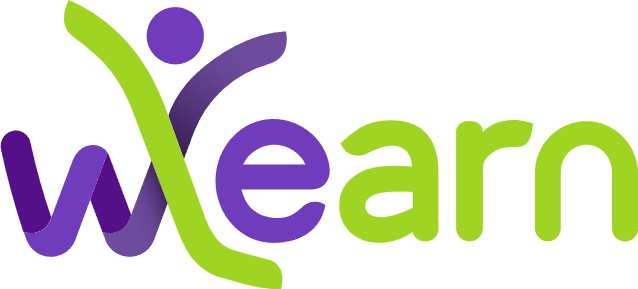PBL PRI: Biomimicry - May 2022
Class
BIOMIMICRY
Driving Question:
How can we apply a sustainable and realistic solution learned from nature to a real-world problem that will have a good influence on our community and society?
Project Summary
The Earth is facing a number of large, shared environmental, social, and economic problems. As we look for solutions to the problems we face, people can leverage the strength of nature’s designs. When we study and use nature as inspiration in our solutions, we are doing biomimicry. Using biomimicry to address human problems is not a new idea. Indigenous cultures and current businesses have used biomimicry to find creative ways to solve the problems they have been faced with. These problems might be world-scale issues or local issues. Some biological structures or behaviors can be more helpful than others when solving specific problems. To derive the best solution to a problem, the structures of many natural systems should be investigated and the most beneficial ones should be incorporated into the design of the solution. Nature solves its problems with well-adapted designs, life-friendly chemistry, smart material, and energy use.
Learning Goals
Key Standards
WLA Mastery Credits - Curiosity & Creative Thinking
6.1.1 Artistic Creation: Learner can generate/produce artistic works using appropriate techniques and materials
6.1.2 Creativity from Synthesis: Learner can integrate multiple data and/or opinions to create new meaning.
WLA Mastery Credits - Effective Written & Oral Communication
5.1.1 Composition: Learners can follow an ongoing writing process that includes planning, drafting, revising, editing, and publishing using ideas, organization, voice, sentence fluency, grammar, and word choice.
5.1.2: Discussions: Learners can initiate and participate in rich collaborative discussions.
5.1.4: Public Speaking: Learners can speak before an authentic audience in an engaging and convincing way.
WLA Mastery Credits - Critical Thinking & Problem-Solving Skills
2.1.1 Problem Identification: The learner can identify, analyze, and frame the problem challenge in a simple and realistic way.
2.1.2 Research Skills: Learners can conduct short research, gather pertinent information from a range of reliable sources, and interpret data in a meaningful way.
2.1.3 Problem Solving: Learners can analyze situations, identify patterns, gather relevant facts, and create plans of action to implement solutions.
2.1.4 Ideation: Learners can develop, transcribe, and communicate ideas to others in both academic and social settings as well as in interpersonal relationships.
2.2.2 Design Solution: The learner can understand the challenge and design a viable action plan that offers a sustainable solution.
WLA Mastery Credits - Leadership & Collaboration
3.1.2 Project Management: Learners can effectively manage tasks and solve arising problems between members and lead to achieving the group's goals.
3.1.3 Leadership Collaboration: Learners can lead and understand the value of working as part of a team, empowering others, and understanding the viewpoints of others.
3.1.4 Collaborative Team Spirit: Learners can use collective processes and strategies to move toward team goals.
WLA Mastery Credits - Self-Directed Learning
1.1.1 Goal Setting: Learners can set challenging, achievable goals, and identify and access the resources necessary to achieve the goals.
1.1.2 Self Management: Learners can consistently manage time and resources in an efficient manner to achieve certain tasks that will lead to the goal.
1.1.5 Growth Mindset: Learners can ask for help and share progress with others to get their perspective. Learners can take advice and corrections from people for growth and improvement.
WLA Mastery Credits - Entrepreneurship & Adaptability
4.1.3 Identify a Social Problem: Learners can identify a social problem and design a solution that will help address the people's needs.
4.2.4 Prototyping: Learners can analyze and identify the design challenge and develop a sustainable solution in greater detail while applying engineering or technology skills.
WeLearn Future Skills Mapping
Key Vocabulary
This is a suggested list to get you started. The following are the key vocabulary words and terms you need to learn!
- Biological models
- Biological strategy
- Biomimicry
- Designer
- Function
- Organism
- Scientific Observation
- Sustainability
Literacy Skills
- Expository writing
- Reading informational text
- Presenting ideas with evidence
- Presenting ideas with digital media and visual displays enhance understanding
Success Skills
- Critical thinking
- Collaboration
- Creativity
- Communication
- Citizenship
Major Products
Team/Whole Class Products
Physical or digital models or devices that are inspired by nature and help solve a real-world problem.
Making It Public
Slide presentation and model/device display
Project Milestones
Day 1 INTRODUCTION & INVESTIGATION
Estimated Time: 4hrs (May 6, 2022)
Objective: Learners explore the meaning and importance of biomimicry and learn that they will be developing nature-inspired physical/digital devices/models to help solve a real-world problem. Learners recognize and choose a problem to investigate.
- Learners watch an introductory film about Biomimicry with examples to gain a better understanding of what it means, how is it used in daily lives, and how important it is.
- Learners have a discussion regarding the project's final products.
- Learners create a list of Need-to-Know Questions.
- Learners make a list of difficulties they experience on a daily basis and choose one problem to focus on with their group.
- Learners explore AskNature, the world's largest Biomimicry database, to learn the Language of Biomimicry.
- Learners fill out an exit ticket to wrap up the day.
DAY 2 SELECTION & CREATION
Estimated Time: 4hrs (May 11, 2022)
Objective: Learners will analyze which plant or animal functions can help design solutions inspired by nature. Learners will create a blueprint of the physical/digital models of their solutions.
- Learners get introduced to the Biomimicry Design Process.
- Learners look through the database and select the appropriate creatures to use as inspiration for their ideas.
- Learners draw a sketch or concept diagram of the biological strategy to help clarify their understanding.
- Learners (online) create blueprints of their three-dimensional models that highlight the abstracted biological strategy used as an innovation.
- Learners (onsite) create blueprints of their physical models/devices.
- Learners complete an exit ticket to wrap up the day.
DAY 3 INNOVATION
Estimated Time: 4hrs (May 13, 2022)
Objective: Learners apply the information they have gathered to create nature-inspired models or devices that solve their chosen problem. Learners analyze more examples and add more features to their ideas to verify that they are tackling the problem effectively.
- Learners begin the process of creating physical and 3D models.
- Learners review more examples from databases.
- Learners add more features to their designs to tackle their chosen difficulty in the best way.
- Learners submit Draft 1 of their models.
- Learners complete an exit ticket to end the day.
DAY 4 INNOVATION CONTINUED
Estimated Time: 4hrs (May 18, 2022)
Objective: Learners evaluate and optimize their models/devices. Learners create slide presentations to present their projects for the final showcase day.
- Learners assess and briefly explain how their final design helps solve the problem.
- Learners propose changes to the design to make the design a more effective solution to the problem if their designs do not solve the problem.
- Learners continue to develop their models.
- Learners submit draft 2 of their models.
- Learners start creating their slide presentations for the showcase and submit draft 1.
- Learners complete an exit ticket at the end.
DAY 5 INNOVATION CONTINUED
Estimated duration: 4hrs (May 20, 2022)
Objective: Learners continue developing their models with their groups. Learners evaluate whether or not their creations are primarily inspired by nature, or if it plays a role.
- Learners will continue to create the physical models and the 3D models.
- Learners will assess whether or not their creations are primarily inspired by nature by asking, “If I take the natural strategy away, does the design still function?” The goal is that it would not function without a natural strategy!
- Learners will assist one another and will receive continual assistance and feedback from the Coaches.
- Learners will submit draft 3 of their models.
DAY 6 IMPROVISATION & COMMUNICATION
Estimated duration: 4hrs (May 25, 2022)
Objective: Learners finalize their models and presentation slides. Learners practice and self-assess their presentation skills.
- Learners give the final touches to their models and presentation slides.
- Learners divide the presentation slides among the members so each member in their group gets to present.
- Learners practice explaining how their design solves the selected problem, how it was inspired by nature, and how they created the design in real life.
- Learners submit draft 4 of their models.
- Learners self-assess their presentation skills utilizing a rubric in order to improve their communication.
DAY 7 COMMUNICATION CONTINUED
Estimated duration: 4hrs (May 27, 2022)
Objective: Learners undergo a final rehearsal for their presentations and reflect on their PBL journey.
- Learners have the opportunity to practice their presentation skills before the final showcase.
- Learners submit their final projects, slide presentation, and pending assignments on NEO.
- Learners write a final reflection of the project and submit it.
- Learners receive verbal feedback from the coaches when they present to improve their skills.
DAY 7 COMMUNICATION - SHOWCASE DAY
Estimated duration: 4hrs (May 27, 2022)
Objective: Learners present their models/devices to the school and local community and receive feedback
- Students present their projects to the local audience in groups.
- Students elicit verbal feedback from attendees to get their perspective on the nature-inspired models.
Total Hours: 32 hrs
Total Sessions: 16 sessions (2 sessions per day: Morning & Afternoon)
Total Days: 8 days
Default Timeline (6wks Project)
Here is the class outline:
1. DAY 1: Introduction & InvestigationDriving Question: How could using biomimicry help us design solutions to our everyday challenges? What problem could we identify and try to solve by creating a biomimicry design? |
2. DAY 2: Selection & CreationDriving Question: How can we use biological strategies from organisms to inspire a solution to the identified problem? How can we create a biomimetic design that addresses our identified problem? |
3. DAY 4: Innovation Continued!Driving Question: How can we create a biomimetic design that addresses our identified problem? |
4. DAY 5: Innovation Continued!Driving Question: How can we create and improve our biomimetic design that addresses our identified problem? |
5. DAY 6: Improvisation & Practice CommunicationDriving Question: How can you communicate the process of designing with nature in mind? |
6. DAY 7: Communication - Final RehearsalDriving Question: What did you learn about biomimicry and how can you communicate the process of designing with nature in mind? |
7. DAY 8: Communication - Showcase Day!Driving Question: Was our presentation successful in communicating the process of designing with nature in mind? |




